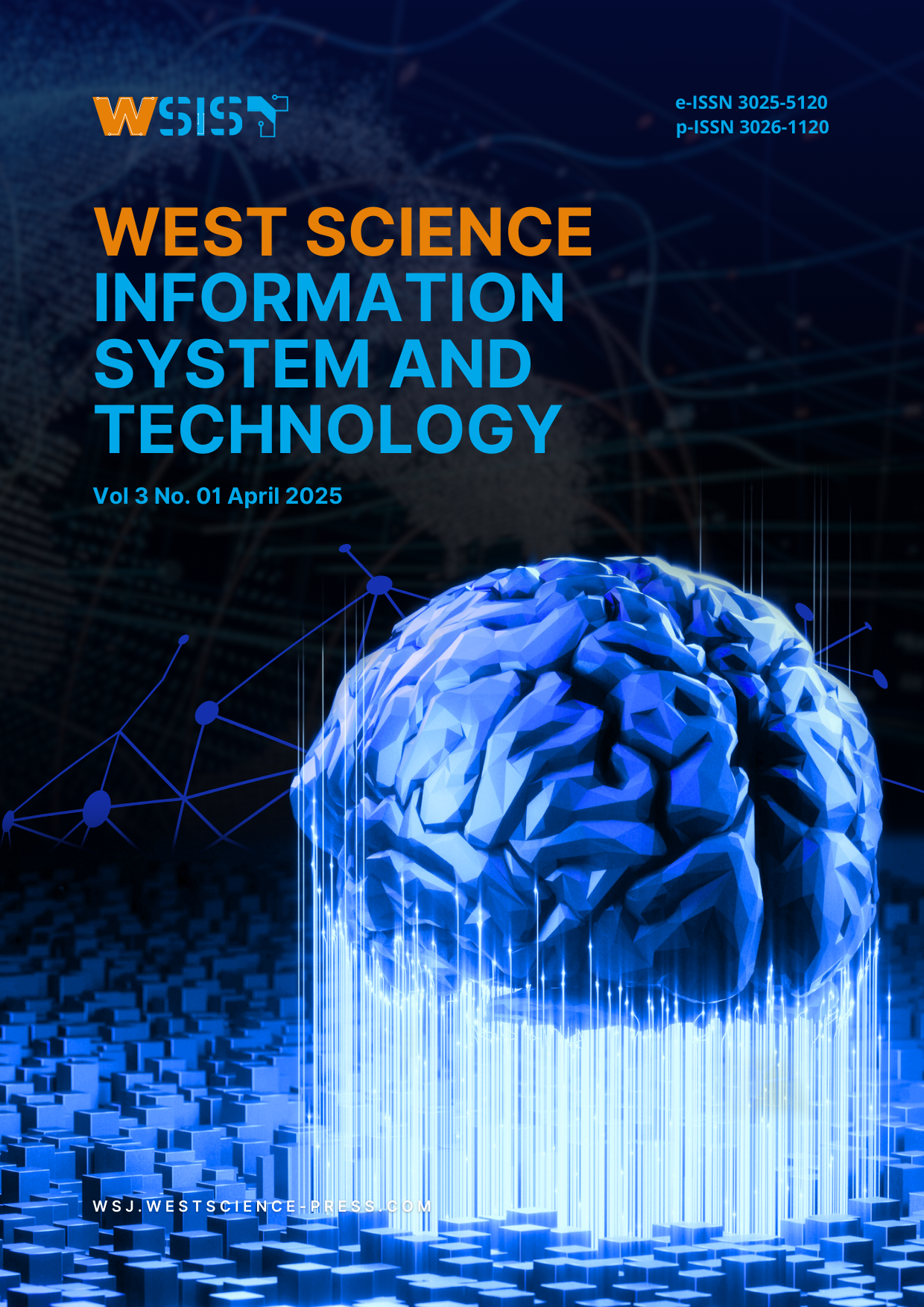Field Measurement Results on the Presence of Rogue Base Stations (Fake BTS) in Urban Areas
DOI:
https://doi.org/10.58812/wsist.v3i01.1844Keywords:
Rogue Base Station, Fake BTS Detection, Cellular Network Security, Signal Anomaly Analysis, Spectrum MonitoringAbstract
This research examines the presence and technical characteristics of rogue base stations (illicit BTS) through empirical field assessments conducted in densely populated urban environments. By employing a spectrum analyzer alongside the G-NetTrack application across frequency ranges extending from 900 to 2300 MHz, the investigation revealed signal anomalies that are suggestive of unauthorized base station operations. The signals that were detected displayed abnormal intensities coupled with variable stability, abrupt shifts from 4G/5G networks to 2G networks, and discrepancies in cell ID and network identity parameters (MCC, MNC, LAC). These attributes imply coerced connections to illegitimate transmitters. The rogue BTS units were predominantly located in close proximity to governmental offices, commercial hubs, and public venues, thereby indicating a potentially strategic deployment approach. The results underscore the critical necessity for the implementation of early detection systems and inter-agency cooperation to alleviate the risks associated with communication interception. By furnishing technical indicators and empirical measurement data, this study contributes to the advancement of network security frameworks and informs policy formulation aimed at safeguarding cellular infrastructure.
References
[1] ITU, “Measuring digital development: Facts and figures,” International Telecommunication Union, 2021.
[2] Y. Zhou, A. Alshamrani, A. S. Uluagac, “Cellular network security: Threats, architecture, and new directions,” IEEE Communications Surveys & Tutorials, vol. 21, no. 1, pp. 356–379, 2019.
[3] V. Nguyen, X. Lin, and H. Li, “Understanding 5G security: Challenges and opportunities,” IEEE Network, vol. 35, no. 2, pp. 88–95, 2021.
[4] A. Shaik, R. Borgaonkar, N. Asokan, V. Niemi, and J. Seifert, “Practical attacks against privacy and availability in 4G/LTE mobile communication systems,” in Proc. 23rd Annual Network and Distributed System Security Symposium (NDSS), 2015.
[5] S. Hussain, O. Chowdhury, and A. Yip, “Privacy attacks on 4G cellular paging,” in Proc. ACM CCS, 2021, pp. 1137–1150.
[6] D. Arik and M. Poznanski, “Cyber threats to mobile networks,” Journal of Cybersecurity, vol. 4, no. 3, pp. 27–35, 2016.
[7] A. Abdalla and M. Tariq, “False base station detection using signal fingerprinting,” IEEE Access, vol. 11, pp. 25438–25450, 2023.
[8] L. Rupprecht, A. Dabrowski, T. Holz, E. Weippl, and P. Teufl, “Breaking LTE on layer two,” in Proc. IEEE Symposium on Security and Privacy (S&P), 2018, pp. 1121–1136.
[9] R. Karim, Z. Fatima, and M. Shah, “Mobile network vulnerabilities: An overview,” IEEE Communications Surveys & Tutorials, vol. 24, no. 3, pp. 1893–1916, 2022.
[10] J. Park, H. Lee, and Y. Kim, “Exploring IMSI catcher detection methods,” in Proc. ACM WiSec, 2020, pp. 1–11.
[11] A. Dabrowski, N. Pianta, T. Klepp, M. Mulazzani, and E. Weippl, “IMSI catch me if you can: IMSI-catcher-catchers,” in Proc. Annual Computer Security Applications Conference (ACSAC), 2014.
[12] M. Marzouki, R. Boutaba, and I. Ahmad, “Security risks of fake base stations in 5G networks,” IEEE Network, vol. 35, no. 3, pp. 52–58, 2021.
[13] S. Han, Z. Wu, and X. Wang, “Threat intelligence for 5G: Detection of rogue base stations,” IEEE Transactions on Information Forensics and Security, vol. 17, pp. 1189–1202, 2022.
[14] M. Lanz, D. Schmidt, and K. Biedermann, “Analyzing the risks of rogue LTE base stations,” in Proc. IEEE CNS, 2020, pp. 1–9.
[15] H. Kim, J. Lee, and C. Park, “Mobile network surveillance and IMSI catcher detection: A comprehensive survey,” IEEE Communications Surveys & Tutorials, vol. 24, no. 4, pp. 2598–2631, 2022.
[16] Pemerintah Republik Indonesia, Undang-Undang Nomor 36 Tahun 1999 tentang Telekomunikasi, Jakarta, 1999.
[17] Pemerintah Republik Indonesia, Peraturan Pemerintah Nomor 52 Tahun 2000 tentang Penyelenggaraan Telekomunikasi, Jakarta, 2000.
[18] Kementerian Kominfo RI, Peraturan Menteri Kominfo Nomor 13 Tahun 2019 tentang Penyelenggaraan Telekomunikasi, Jakarta, 2019.
[19] Pemerintah Republik Indonesia, Undang-Undang Nomor 27 Tahun 2022 tentang Perlindungan Data Pribadi, Jakarta, 2022.
[20] A. Shaik et al., “A comparative study of LTE IMSI catchers,” in Proc. Black Hat Europe, 2015.
[21] 3GPP, “Technical Specification Group Radio Access Network; Evolved Universal Terrestrial Radio Access (E-UTRA); Radio Resource Control (RRC); Protocol specification,” 3GPP TS 36.331, 2022.
[22] H. Patel and A. Qureshi, “Detection techniques for GSM/UMTS/LTE rogue base stations,” International Journal of Security and Networks, vol. 15, no. 2, pp. 75–84, 2021.
[23] B. Lee and M. Choi, “Real-time rogue BTS detection using machine learning,” in Proc. IEEE ICICS, 2023, pp. 19–24.
[24] P. B. Rysavy, “Security in Mobile Wireless Networks,” IEEE Wireless Communications, vol. 26, no. 2, pp. 10–17, 2019.
(Topik: Keamanan jaringan seluler dan risiko BTS palsu)
[25] K. B. Letaief, W. Chen, Y. Shi, J. Zhang, and Y. A. Zhang, “The Roadmap to 6G: AI Empowered Wireless Networks,” IEEE Communications Magazine, vol. 57, no. 8, pp. 84–90, 2019.
[26] R. Borgaonkar, K. Redon, and J.-P. Seifert, “Security analysis of cellular protocols: A signaling perspective,” ACM SIGCOMM Computer Communication Review, vol. 44, no. 2, pp. 61–69, 2014.
[27] A. A. Adepu and A. Mathur, “Anomaly detection in a digital substation using power profiles,” IEEE Transactions on Smart Grid, vol. 9, no. 5, pp. 4501–4511, 2018.
[28] N. Asokan et al., “Mobile network security: Issues, challenges, and research directions,” IEEE Security & Privacy, vol. 20, no. 1, pp. 12–21, 2022.
[29] P. Zhang, J. Lin, and C. Shen, “Blockchain-based secure data sharing for Internet of Things in smart cities,” IEEE Access, vol. 7, pp. 56356–56368, 2019.
[30] M. K. Ismail and N. A. Ahmad, “Review of machine learning applications in detecting rogue base stations,” Journal of Information Security and Applications, vol. 59, p. 102873, 2021.
[31] A. H. Lashkari et al., “Toward developing a systematic approach to generate benchmark datasets for intrusion detection,” Computers & Security, vol. 92, p. 101762, 2020.
[32] J. Liu, N. Kato, J. Ma, and N. Kadowaki, “Device-to-device communication in LTE-Advanced networks: A survey,” IEEE Communications Surveys & Tutorials, vol. 17, no. 4, pp. 1923–1940, 2015.
[33] H. Wang, X. Wang, and J. Liu, “Privacy-aware efficient fine-grained access control for cloud storage with policy updating,” IEEE Transactions on Cloud Computing, vol. 7, no. 2, pp. 476–489, 2019.
[34] Y. Liu, D. Yang, and X. Shen, “Enhancing the security of cloud-assisted Internet of Things systems via blockchain,” IEEE Network, vol. 33, no. 5, pp. 54–60, 2019.
[35] T. D. Hoang and H. Nguyen, “Rogue BTS detection via signal pattern anomaly recognition using deep learning,” in Proc. IEEE International Conference on Communications (ICC), 2023, pp. 1–6.
Downloads
Published
Issue
Section
License
Copyright (c) 2025 Mahadi Pardede

This work is licensed under a Creative Commons Attribution-ShareAlike 4.0 International License.






















 Instagram
Instagram 